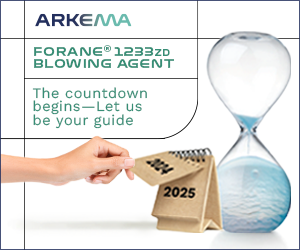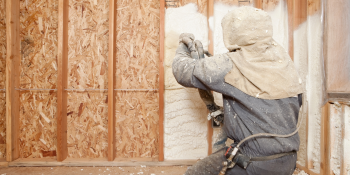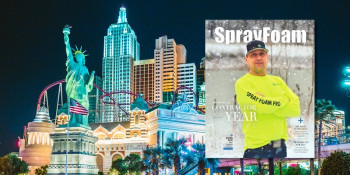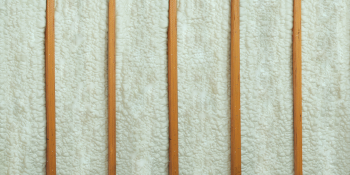Q&A Forums
# rating of foam Post New Topic | Post Reply
| Author | Comments |
|---|---|
|
Terry Adams
Posted: Mar 02, 2010 10:28 PM
|
# rating of foam
Mason, where did the rating come from. We all have been questioned or requested a particular # foam. What does 2# mean because no 2# foam will produce a 2 cu ft block in the real world. Based on most yields its 50% or more. 2 is more like 3 .5 is closer to 1. What conditions do they use to produce their results.
|
|
mason
Posted: Mar 03, 2010 08:19 AM
|
I presume you mean the listed density of the foam. All polyurethane liquid systems (spray or pour in place) are tested under laboratory conditions to obtain their physical properties. Most system houses use a cup sample for density and compressive strength measurements. You take a small amount of A and the same amount of B at room temperature (70 - 75 degrees typically) and mix them together in a paper cup using a high speed mixer. The resulting foam in the cup is allowed to cure, then the foam is cut into smaller squares. The foam is weighed to determine its density. So, a 2 lb density foam weighs 2 lbs per cubic ft. You are correct to assume that the core density as measured by a cup sample will be different than what is sprayed in the field. Due to high density skins formed on the substrate and between lifts, (not to mention substrate temperature variations) typically yields a higher density when sprayed in the field. For example, when spraying a nominal 2 lb density SPF in the field at 70-75 degrees F, expect that sprayed-in-place density to be closer to 2.2. As the substrate gets colder the density will go higher. Why do manufacturers use the cup sample rather than a sprayed-in-place sample? Easy, the test procedure is simple, takes less time, is more reliable than a sprayed sample and the results more consistent. An experienced foam applicator can determine their expected yield under various conditions using the cup sample density and adding anticipated waste factors, such as temperature, knit lines and lift lines, trimming, and uniformity of application. |
|
Terry Adams
Posted: Mar 04, 2010 12:15 PM
|
Kind of like fiberglass's r-value I guess, tested in the lab under ideal conditions. I guess my real beef is if I sprayed and got 2 pound per cu ft. I would be getting 6300 bd ft per set. Guess you wouldn't post who gets 2.2 per cu ft cause that would be around 5800 bdft per 1050lb set. |
|
mason
Posted: Mar 05, 2010 08:00 AM
|
I agree with the manufacturer's procedure for determining density of foam. The test is reproducible, reliable and provides less chance of varying results than if you sprayed the foam and weighed it. Since most of the suppliers (perhaps all of the suppliers) use similar procedures for labeling their foam, the market place has a fair opportunity to compare density from one company to the other. Most nominal 2 lb density foam will range on the company data sheets from 1.8 to 2.2 These foams typically have compressive strengths of between 20 to 30 psi and higher dimensional stability than foams with less density such as 1.5 -1.7. You are correct to assume that the actual yield will never approach theoritical yield. Depending on the application you may get anywhere from 3500 to 4500 board foot from a 1000 lb kit of 2 lb foam. You will get slightly better yield with foams between 1.5 to 1.7 but, the physical properties of compressive strength and dimensional stability would most likely be less. Be sure to check out the data sheets for all of this information, It can be important if you are in a extreme environments (hot, humid or cold). Use the foam that has a higher compressive strength and low volume change on the humid aging test if you are spraying in a cold storage facility, in a colder northern climate or in an extremely hot and humid environment. There will be less chance of shrinkage or post growth of the foam. |




























